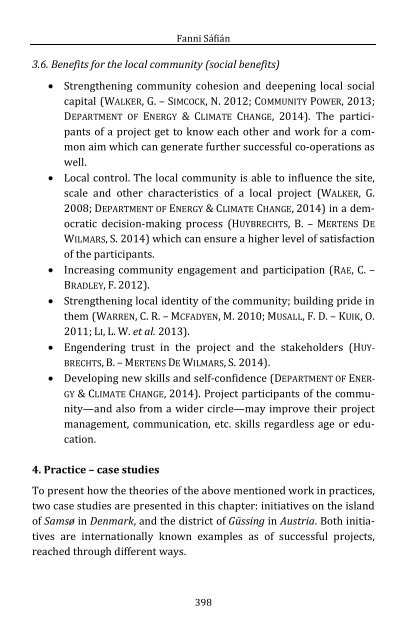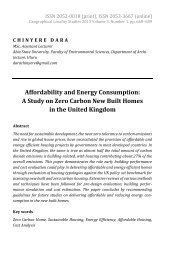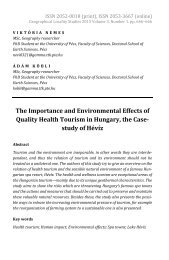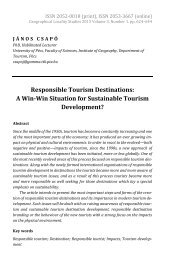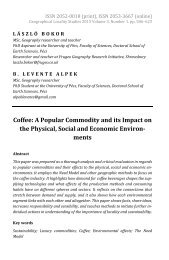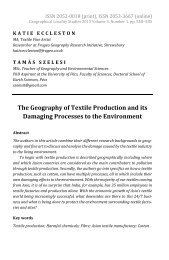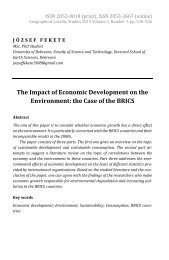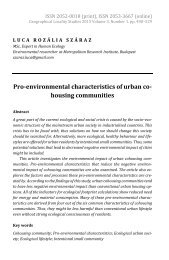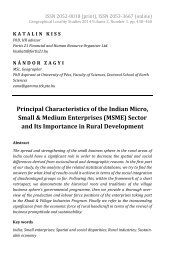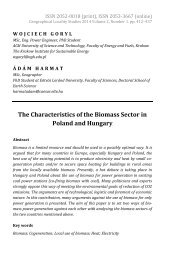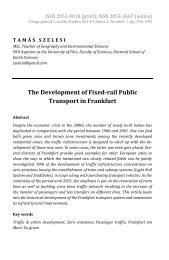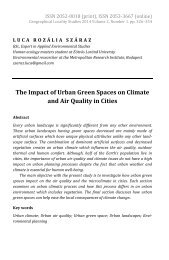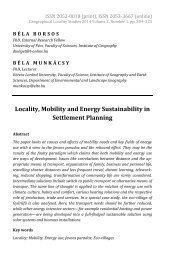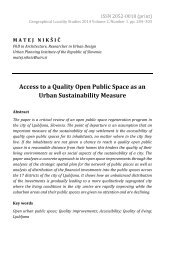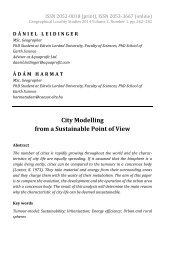Fanni Sáfián: The Synergies of Community Ownership, Renewable Energy Production and Locality – The Cases of Güssing and Samsø
This paper presents the concept and the main forms of community ownership. Analysing the literature and the cases of Güssing, Austria and Samsø, Denmark helps to recognise how to promote a successful local renewable energy project and what kind of additional benefits may be earned by applying the appropriate ownership model and project outline.
This paper presents the concept and the main forms of community ownership. Analysing the literature and the cases of Güssing, Austria and Samsø, Denmark helps to recognise how to promote a successful local renewable energy project and what kind of additional benefits may be earned by applying the appropriate ownership model and project outline.
You also want an ePaper? Increase the reach of your titles
YUMPU automatically turns print PDFs into web optimized ePapers that Google loves.
<strong>Fanni</strong> <strong>Sáfián</strong><br />
3.6. Benefits for the local community (social benefits)<br />
<br />
<br />
<br />
<br />
<br />
<br />
Strengthening community cohesion <strong>and</strong> deepening local social<br />
capital (WALKER, G.<strong>–</strong>SIMCOCK, N.2012;COMMUNITY POWER, 2013;<br />
DEPARTMENT OF ENERGY &CLIMATE CHANGE, 2014). <strong>The</strong> participants<br />
<strong>of</strong> a project get to know each other <strong>and</strong> work for a common<br />
aim which can generate further successful cooperations as<br />
well.<br />
Local control. <strong>The</strong> local community is able to influence the site,<br />
scale <strong>and</strong> other characteristics <strong>of</strong> a local project (WALKER, G.<br />
2008; DEPARTMENT OF ENERGY &CLIMATE CHANGE, 2014) in a democratic<br />
decisionmaking process (HUYBRECHTS, B.<strong>–</strong>MERTENS DE<br />
WILMARS, S. 2014) which can ensure a higher level <strong>of</strong> satisfaction<br />
<strong>of</strong> the participants.<br />
Increasing community engagement <strong>and</strong> participation (RAE, C.<strong>–</strong><br />
BRADLEY, F. 2012).<br />
Strengthening local identity <strong>of</strong> the community; building pride in<br />
them (WARREN,C.R.<strong>–</strong>MCFADYEN, M. 2010; MUSALL,F.D.<strong>–</strong>KUIK,O.<br />
2011; LI,L.W. et al. 2013).<br />
Engendering trust in the project <strong>and</strong> the stakeholders (HUY<br />
BRECHTS,B.<strong>–</strong>MERTENS DE WILMARS,S. 2014).<br />
Developing new skills <strong>and</strong> selfconfidence (DEPARTMENT OF ENER<br />
GY & CLIMATE CHANGE, 2014). Project participants <strong>of</strong> the community—<strong>and</strong><br />
also from a wider circle—may improve their project<br />
management, communication, etc. skills regardless age or education.<br />
4. Practice <strong>–</strong> case studies<br />
To present how the theories <strong>of</strong> the above mentioned work in practices,<br />
two case studies are presented in this chapter: initiatives on the isl<strong>and</strong><br />
<strong>of</strong> <strong>Samsø</strong> in Denmark, <strong>and</strong> the district <strong>of</strong> <strong>Güssing</strong> in Austria. Both initiatives<br />
are internationally known examples as <strong>of</strong> successful projects,<br />
reached through different ways.<br />
398


